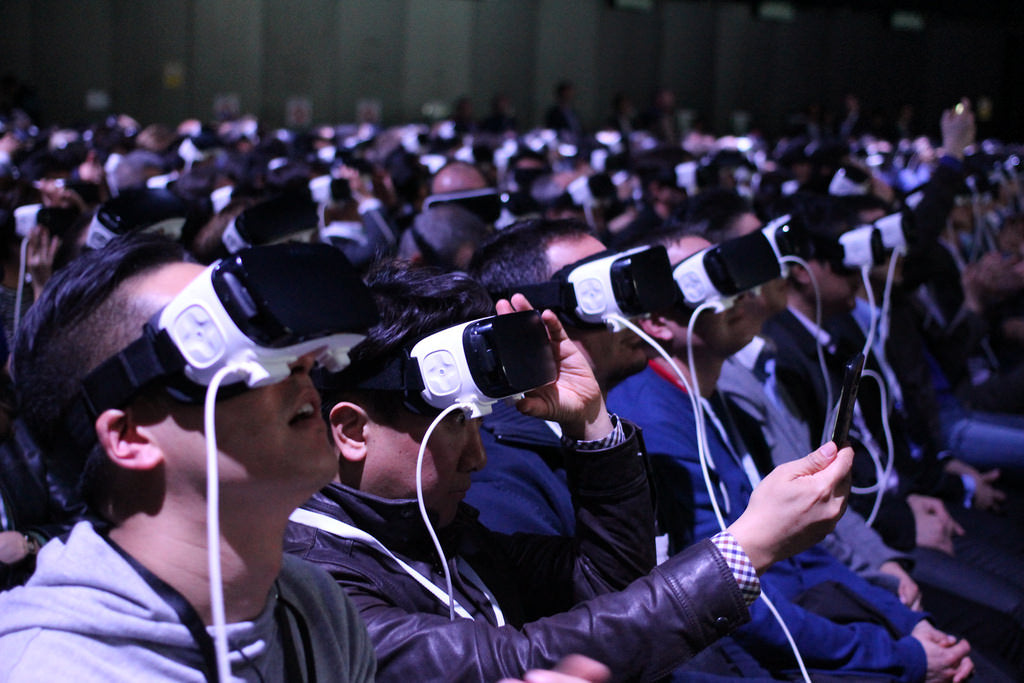Image Source - (Flickr / Maurizio Pesce)
If the term virtual reality conjures up mental images of tech-savvy millennials wearing chunky black goggles in order to be fully immersed in the world of a video game, you aren’t alone. While it has been slowly transforming the video game industry for the past few years, virtual reality is making its way into other industries as a fundamental tool - including health care. The term virtual reality (VR) is defined as “an artificial environment that is created with software and presented to the user in such a way that the user suspends belief and accepts it as a real environment”. When you think about virtual reality with this framework, it’s not hard to imagine the different contexts that this emerging technology can be applied to beyond the gaming world.
A Tool for Clinicians
Virtual reality creates a safe space in which medical students can learn how to interact with patients under certain environments, and seasoned surgeons can practice complex surgeries without risking a human subject. With the introduction of virtual reality into the healthcare world, professionals and educators are becoming increasingly open to the idea of using a “gaming tool” to supplement and enhance traditional health education. Currently, the traditional methods fall onto a spectrum focus with one side being direct patient contact and the other being textbook and lecture-based learning. Each of these methods have significant restrictions that virtual reality could help remedy.
This video was produced by the first surgeon to broadcast live surgery using Medical Realities’ Virtual Surgeon platform. As a viewer, you may interact with the video by using the 360 arrow tool at the top left corner of the screen.
Gaining Independence

Image Source - (Toyra)
As an assistive technology, virtual reality is being introduced as a learning tool for wheelchair users to become accustomed to moving around in different environments using a head-mounted display (HMD) and an assistive switch such as a joystick. Wheelchair users can navigate a virtual world like a simulated busy street or shopping center to learn how to avoid obstacles and navigate inaccessible situations in a virtual setting before putting these into practice in the real world. The aim of this technology is to enable the disabled to lead an independent life wherever possible.
Virtual reality can also teach modified daily activities including cooking, shopping, and other household tasks so that users with disabilities can enhance their sense of independence. This type of software is also useful for designers who want to apply universal design principles when designing accessible buildings. Virtual reality becomes a means of testing prototypes before they are built and put to the accessibility test. The aim is to see if the wheelchair user can successfully negotiate their way around a building and if not, what the potential hazards are.
Rehabilitation for People with Physical Disabilities

Image Source - (Walk Again Project)
In rehabilitation settings, virtual reality aims to improve motor skills and aiding muscle recovery in a noninvasive, safe way. In fact, research has already started to back-up virtual reality as a successful treatment method.
In one study, stroke patients who underwent virtual reality rehab experienced more improvements in arm and hand movement compared to conventional rehab after four weeks of therapy. In the months following the study, doctors found that virtual reality patients continued to have better mobility than the non-virtual reality patients. Other research has shown similarly successful outcomes for patients with cerebral palsy undergoing rehab for balance problems.
Professor of physical therapy at Temple University in Philadelphia Emily Keshner says “using VR, I can control what’s going on around the patient and measure what kind of impact it’s having on that patient’s ability to change. We expose them to this repeatedly and we give them feedback about how they can respond to prevent themselves from falling”.
In another study published in Scientific Reports, eight participants who have had a spinal cord injury for at least three years were subjected to long-term training which included virtual reality. All eight of the patients who participated in the study have gained some motor control and 50% of these patients were upgraded to an incomplete paraplegia classification.
The end results were achieved firstly by placing the participants in a virtual reality environment using an Oculus Rift. Within this environment, the patients learned to use brain activity to control an avatar version of themselves and make it walk around a soccer field. The patients also wore a specially-designed t-shirt which provided haptic feedback to the patients’ forearms, stimulating the sensation of touching the ground. The arms were treated as phantom legs and would fool the brain into feeling like the patient was walking while they moved their arms.
Virtual reality is still in its early stages of medical and rehabilitation practices, but it’s difficult to not visualize the technology standing the test of time. It has the potential to offer students, patients, and professionals opportunities to test their skills and learn new concepts in a safe and immersive environment while having as much fun as a gamer.


Leave a comment: